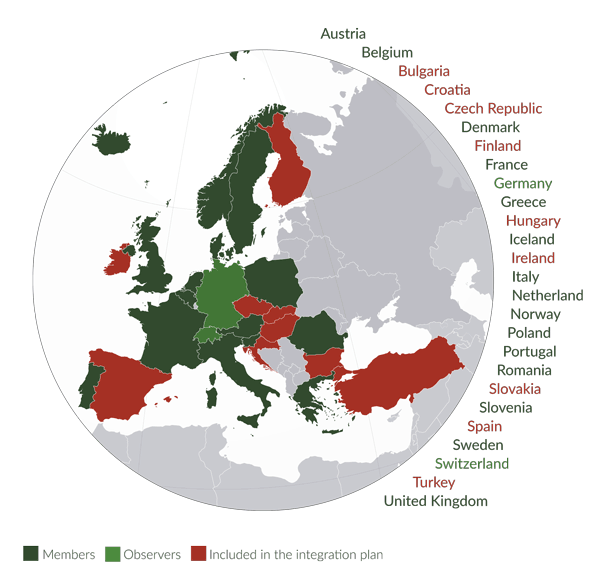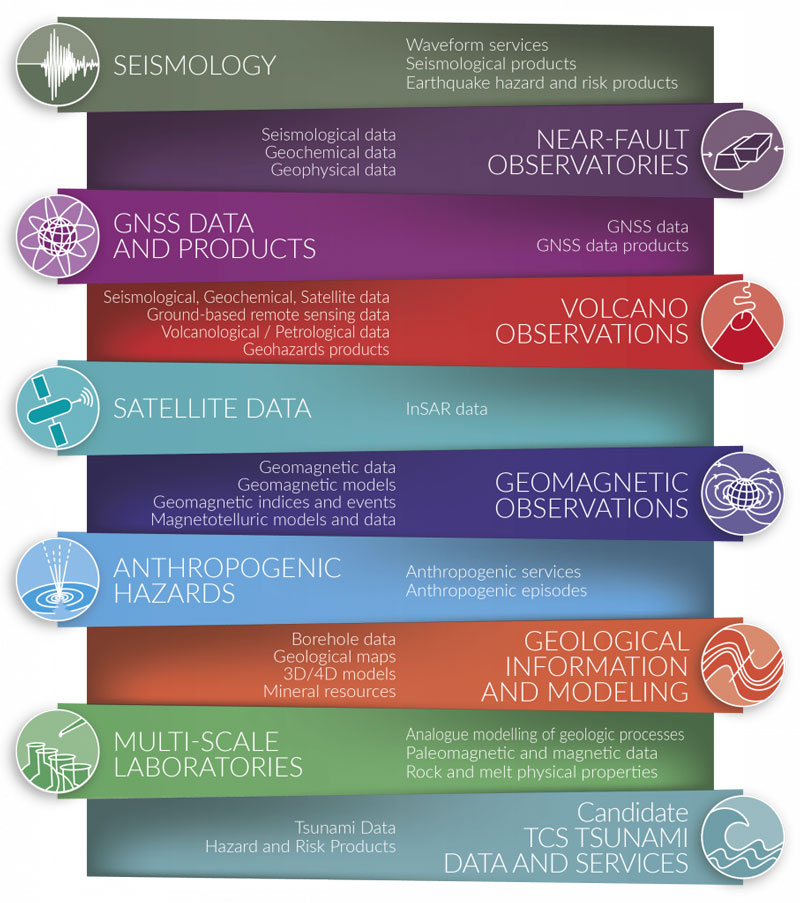by Vasco Avramo (EPOS-ERIC), Daniele Bailo (EPOS-ERIC, INGV) and Rossana Paciello (EPOS-ERIC, INGV)
EPOS, the European Plate Observing System, is currently the only research infrastructure for solid-earth sciences in Europe. It integrates a multitude of different data, metadata, software and services through one single portal, the EPOS Data Portal, released on January 1st 2023.
During the past decade, data infrastructures have become irreplaceable tools for a great variety of stakeholders, such as the scientific community, governments and the private sector. The availability of high-quality, standardised and secure data covering a great diversity of domains is providing a new perspective on the capability of human society to understand and manage the world around us. Solid-earth science data represent the knowledge base to unravel the physical and chemical processes that control earthquakes, tsunamis, volcanic eruptions and all processes driving tectonics dynamics. The Earth is an interconnected system and understanding how it works is crucial for modern society safety and wellness. EPOS is currently the only research infrastructure for solid-earth sciences in Europe that integrates diverse European Research Infrastructures under a common federated framework (see Figure 1).

Figure 1: EPOS members (dark green), observers (light green), and countries included in the integration plan but not in EPOS-ERIC (red).
The conception of EPOS started two decades ago with the collaboration of a great number of countries, national earth science institutions and projects. Until the 2018, EPOS has gone through the Preparatory Phase and the Implementation Phase, supported by European fundings. The main goal was to bring the infrastructure to a governance and technical maturity required to develop thematic and integrated services. On October 30th 2018, the European Commission granted the legal status of ERIC (the European Research Infrastructure Consortium) and, after a Pilot Operation Phase (EPOS POP), EPOS is officially entering its Operational Phase, with the public release of all services and functionality [1].
The key challenge of this system is ensuring sustainable and universal use and re-use of multidisciplinary solid-earth science data and products and fostering state-of-the-art research, innovation and human progress. All the infrastructure is built around the FAIR (findable, accessible, interoperable, reusable) principles, with the aim of harmonising, integrating and making accessible all the available data and metadata concerning solid-earth science. This concept, despite strong support from the international scientific community, is not yet implemented by all scientific institutions and infrastructure, and one of the EPOS objectives is to promote adoption of FAIR by the data providers [2].
EPOS architecture is a complex enterprise and has been planned to work as a single, but distributed, sustainable research infrastructure. The distinctive feature of the architecture is that it is designed by assembling complementary components (Figure 2): the National Research Infrastructures (NRIs), where data are generated, processed, analysed, and archived, represent the foundation that sustains the EPOS Research Infrastructure; the Thematic Core Services (TCS), the community-specific integration component ensuring high-quality, standardised data and service, and the Integrated Core Services (Central Hub, ICS-C and Distributed, ICS-D), the place where actual integration of data and services occurs. Currently, EPOS has 10 TCS (Figure 3), representing a wide spectrum of disciplines within the solid-earth domain.
Such an architecture enabled EPOS to provide integrated access to a multitude of different data, data products, software and services through one single portal, the EPOS Data Portal [3]. It is based on the Integrated Core Services system that, by pursuing a threefold approach based on metadata, semantic and service-based architecture, provides homogeneous access to heterogeneous resources. One of the key elements for the EPOS Data Portal provision, operation and maintenance beyond the technical dimension, is community engagement and management dimension. In this framework several activities and events are regularly carried out to guarantee the effective engagement of the communities that have the required skills for delivering the data and service provision, while ensuring the coherency and the effectiveness of the legal, governance and technical framework in EPOS.

Figure 2: EPOS architecture.

Figure 3: Thematic Core Services (TCS).
On January 1st 2023, the data portal with 250 fully operational data services was released [L1] (Figure 4), 20 years after its conception. This provides an insight on the complexity of the work required to set up EPOS Research Infrastructure as the unique research infrastructure for solid-earth science in Europe. During these years, indeed, more than 600 experts worked together with 100 IT developers, and decision makers from all the involved countries to integrate and harmonise more than 60 different data types. The results of such huge community effort will be presented for the first time at the European Geosciences Union General Assembly from the 24 to the 28 of April in Vienna [L2]. At this event, EPOS will be present with a dedicated booth, where it will be possible to physically test the portal and follow many different educational and disseminating initiatives. We consider this appointment an important opportunity to make the scientific community aware, together with institutional and private stakeholders, of this leading-edge tool supporting the solid-earth community in tackling future scientific challenges.
Links:
[L1] https://www.epos-eu.org/dataportal
[L2] https://www.egu23.eu/
References:
[1] M. Cocco, et al., “The EPOS Research Infrastructure: a federated approach to integrate solid Earth science data and services”, Annals of Geophysics, vol. 65, no. 2, 2022.
[2] D. Bailo, et al., “Perspectives on the Implementation of FAIR Principles in Solid Earth Research Infrastructures”, Frontiers in Earth Science, vol. 8, 2020.
[3] D. Bailo,, et al. "Data integration and FAIR data management in Solid Earth Science." Annals of Geophysics, 2022.
Please contact:
Vasco Avramo, EPOS-ERIC, Italy











